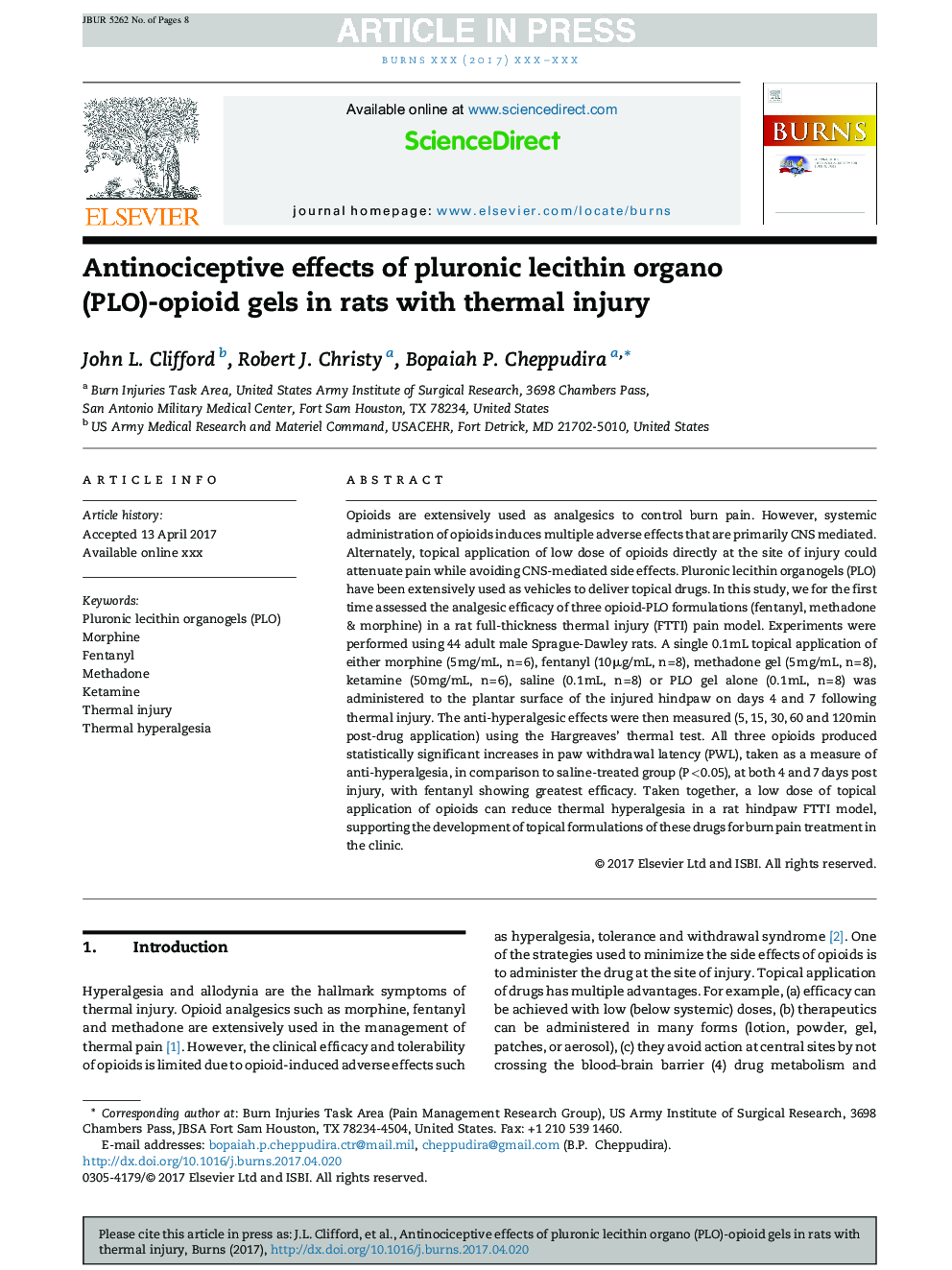| Article ID | Journal | Published Year | Pages | File Type |
|---|---|---|---|---|
| 8694822 | Burns | 2017 | 8 Pages |
Abstract
Opioids are extensively used as analgesics to control burn pain. However, systemic administration of opioids induces multiple adverse effects that are primarily CNS mediated. Alternately, topical application of low dose of opioids directly at the site of injury could attenuate pain while avoiding CNS-mediated side effects. Pluronic lecithin organogels (PLO) have been extensively used as vehicles to deliver topical drugs. In this study, we for the first time assessed the analgesic efficacy of three opioid-PLO formulations (fentanyl, methadone & morphine) in a rat full-thickness thermal injury (FTTI) pain model. Experiments were performed using 44 adult male Sprague-Dawley rats. A single 0.1 mL topical application of either morphine (5 mg/mL, n = 6), fentanyl (10 μg/mL, n = 8), methadone gel (5 mg/mL, n = 8), ketamine (50 mg/mL, n = 6), saline (0.1 mL, n = 8) or PLO gel alone (0.1 mL, n = 8) was administered to the plantar surface of the injured hindpaw on days 4 and 7 following thermal injury. The anti-hyperalgesic effects were then measured (5, 15, 30, 60 and 120 min post-drug application) using the Hargreaves' thermal test. All three opioids produced statistically significant increases in paw withdrawal latency (PWL), taken as a measure of anti-hyperalgesia, in comparison to saline-treated group (P < 0.05), at both 4 and 7 days post injury, with fentanyl showing greatest efficacy. Taken together, a low dose of topical application of opioids can reduce thermal hyperalgesia in a rat hindpaw FTTI model, supporting the development of topical formulations of these drugs for burn pain treatment in the clinic.
Related Topics
Health Sciences
Medicine and Dentistry
Critical Care and Intensive Care Medicine
Authors
John L. Clifford, Robert J. Christy, Bopaiah P. Cheppudira,
